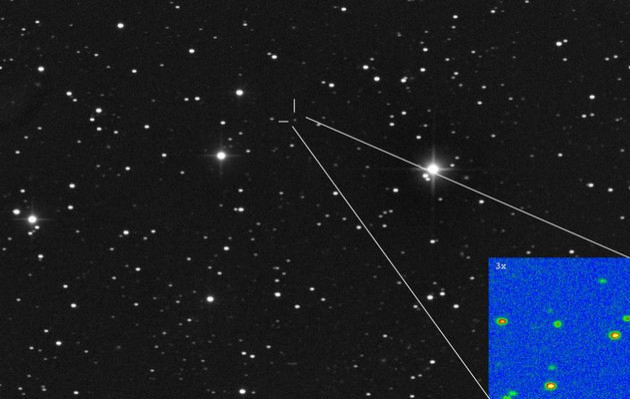ISON Could Be ‘Comet Of The Century,’ Even Visible During The Day Later This Year

Although Comet ISON will not be passing near Earth until the end of 2013, astronomers already project it to put on a dazzling show that will be visible during the day. Because of its size and expected brilliance, ISON could be the “comet of the century.”
Comet ISON was discovered in September 2012 by two amateur astronomers from the International Scientific Optical Network, hence the name. Comet ISON was found when it was 600 million miles away from the sun, reports Time. Comets are just large chunks of ice and debris that heat up as their orbit takes them closer to the Sun, which causes them to become visible.
Time notes that Comet ISON could be several miles across by the time nears Earth and ultimately passes just 1 million miles above the Sun’s surface, so chances are it will survive largely intact, creating a display worthy to be dubbed the “comet of the century.”
In fact, Comet ISON could be so bright it could resemble a full moon. Recent projections indicate ISON will pass the sun’s surface on Nov. 28 and could possibly be seen throughout December and into January 2014. Time notes that August will be an important month in the ISON countdown since the comet will have started to form its halo and astronomers could predict how bright ISON could become as it passes by the sun’s surface.
In more recent developments, ISON is currently near Jupiter and the comet may be visible during the day, reports Spaceweather.com. Astronomer John Chumack has been tracking ISON and says, “It is still pretty faint, near 16th magnitude, but don't be fooled by that. This could become one of the best comets in many years.”
According to NASA production editor Tony Phillips, who updates Spaceweather.com, “If the comet survives the encounter, it could emerge glowing as brightly as the moon, visible near the sun in the blue daylight sky. The comet's dusty tail stretching into the night would create a worldwide sensation.” ISON could be so bright that it could be seen with the naked eye during the day, reports Space.com.
Expect to hear plenty more about this potentially spectacular comet. November is a long time from now, and ISON is traveling a great distance, and has to survive its passage across the sun’s surface, so there is a possibility that ISON may not live up to its “comet of the century” billing.
© Copyright IBTimes 2025. All rights reserved.






















